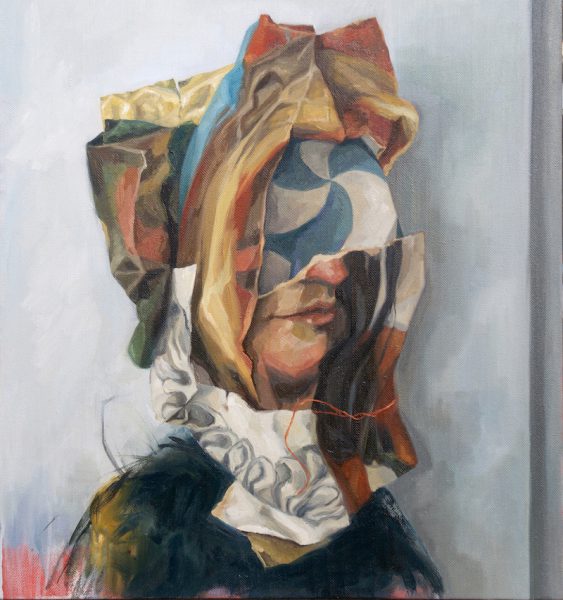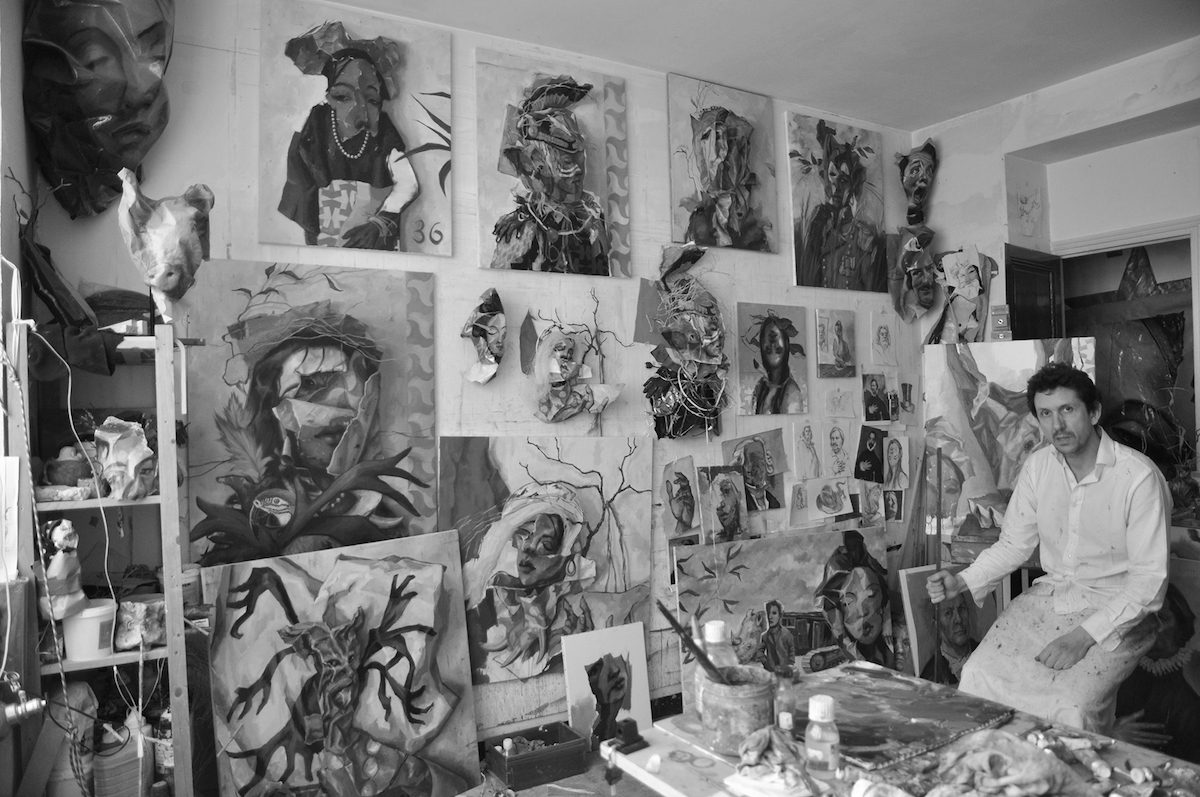DARREN COFFIELD: Rupert Shrive has a new exhibition that opened last week at London’s Serena Morton Gallery, entitled ‘Mysterious Arrangement’ – a phrase taken from Joseph Conrad’s 1899 novel Heart of darkness, about an existential journey, undertaken by steamboat up the Congo, during the colonial era. The paintings reference both still life and collage.
Is this a new departure for you Rupert? What inspired this new group of work?
RUPERT SHRIVE: I’ve worked for a long time in different mediums: predominately painting but also collage, sculpture, ceramics and some generative programming that’s yet to see the light. Through mixing torn fragments of paintings with pencil drawings I made collages and through crushing paintings I transformed them into sculpture – then arranged in multiple element installations. In this latest series I’ve tried to bring it full circle – and painted oil portraits of these collage/sculptures – a kind of ‘transgenre’ journey from painting and drawing into collage and sculpture and then back into painting if you like – a convoluted way of working that keeps me entertained.
DARREN COFFIELD: Your current exhibition seems to be interested in the dichotomy of diminishing tribal cultures in a global technological village. Could you elaborate?
RUPERT SHRIVE: Well you only have to open a newspaper or turn on your electronic device to see how the man-made world’s choking on its own vomit. The next generation won’t thank us for it – gorging ourselves on natural resources, essential to the well-being of the planet.
Obviously tribal cultures are at the sharper end of the stick and have most to lose. The best technological developments are those that go the other way and enhance the preservation of landscapes, resources and cultures – and with any luck, there’ll be more of them in the future…
DARREN COFFIELD: Are you pessimistic about the future of mankind? Can art make a difference or is it superfluous?
RUPERT SHRIVE: It isn’t difficult to be pessimistic about mankind – but from the position of someone who makes things, I’m always hopeful that art can change people’s ways of thinking – there wouldn’t be much impetus if I didn’t believe in it.

DARREN COFFIELD: What are your thoughts, as a painter, working in what is often called outmoded medium in the onslaught of the digital age? Are you an endangered profession?
RUPERT SHRIVE: I mentioned before a generative art program I’m developing – it creates ephemeral images from particular parameters and algorithms I’ve designed. And sure it’s a different activity from observational painting but the essence, the magical essence of discovery that motivates everything, is still much in evidence.
DARREN COFFIELD: Did you envisage the works individually or as part of a series?
RUPERT SHRIVE: Like most things in life, one thing just led to another…
DARREN COFFIELD: Your artworks are always beautifully executed. Can you tell me something about the aesthetic values you bring to your artwork?
RUPERT SHRIVE: That’s kind of you to say – and if it’s so, it’s entirely accidental.
DARREN COFFIELD: Does accident play a role in your art? How about serendipity?
RUPERT SHRIVE: Very much so – it’s what I’m always looking for – when something unexpected happens and the piece comes alive.
DARREN COFFIELD: Is drawing part of your practice. How often do you draw?
RUPERT SHRIVE: If an artist doesn’t draw his experience of life is impoverished.
DARREN COFFIELD: Who are the painters that inspire you to paint?
RUPERT SHRIVE: Obviously there are some constants – like El Greco, Goya, Arcimboldo, through to Matisse and Picasso and then the School of London – but at any and every moment I can give you a different answer depending on what I’m doing.
DARREN COFFIELD: Some artists, like Gainsborough, employed assistants to paint certain parts of their paintings – like a nice pair of curtains! Can you imagine going down this path?
RUPERT SHRIVE: It would be like cutting off your nose to spite your face – why explore your own things, through other people’s labour?
DARREN COFFIELD: Over the last few decades the boundaries of the art world have blurred with the entertainment industry. How do you feel about this constant craving for novelty and entertainment that has consumed the art world? Was it ever thus?
RUPERT SHRIVE: I certainly feel that people expect more instant gratification – a lot of art fair art can be quite arresting initially and then not have much to offer later. I think what most artists really want, is to make work that’s both seductive and convincing and with which you can develop a lasting relationship – one where your thoughts are reflected in a different way every time you look at it.
DARREN COFFIELD: You have been painting figuratively for three decades are you pleased that figurative painting has come back in vogue?
RUPERT SHRIVE: It never went out – for some people random found objects on the floor can seem a bit passé…
DARREN COFFIELD: If you were sent back in time to visit your younger self, what advice would you give yourself as an artist?
RUPERT SHRIVE: Follow your passions to find your purpose.
Rupert Shrive ‘Mysterious Arrangement’ Serena Morton Gallery 343 Ladbroke Grove, London W10 6HA
Until 23 June 2017

